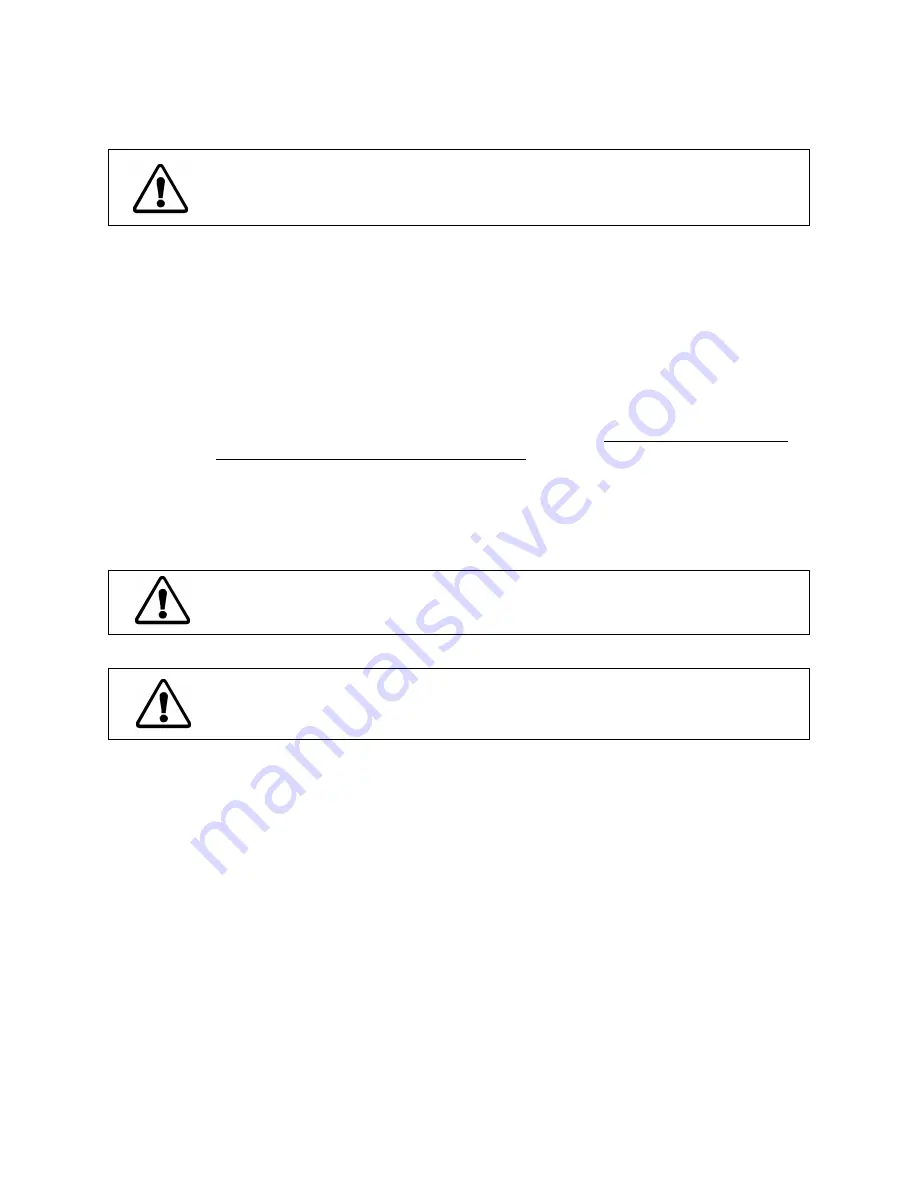
Section 2 - Set Up
Before proceeding, be sure all power is off
2.1 Location
Locate the chiller on a strong, level surface. Insure easy access to the top cover and position
the chiller for unobstructed air flow through the front and rear screens. The front wheels can be
locked to keep the chiller in place while in use. Avoid voltage drops by using properly grounded
power outlets wired with 14 gauge or larger diameter wire. If possible, be close to the power
distribution panel. Minimize low line voltage problems by eliminating the use of extension cords.
2.2 Reservoir Fluids
For most applications above +15°C, distilled water is satisfactory. For operation below +15°C, the
chiller MUST be protected with an antifreeze solution. Ethylene glycol (laboratory grade) and water
in a 50/50 mixture is satisfactory from +15°C to -15°C. Select a fluid that is compatible with the
chiller's wetted parts of brass, copper, polypropylene, PVC, nylon and stainless steel. Only use fluids
that will satisfy safety, health and equipment compatibility requirements.
CAUSTIC, CORROSIVE
OR FLAMMABLE FLUIDS MUST NEVER BE USED.
Do not use a flammable fluid as a fire hazard may result.
WARNING!
Operation below +15°C requires antifreeze in the circulating fluid.
2.3 Pump, Hoses and Couplings
To maintain a safe workplace and to avoid leaks, special care should be taken when choosing hoses
and connectors for the chiller.
1.
Pressure ratings - Hoses should be able to withstand the largest pressure that they will
encounter. For positive displacement pump models, this is 100 psi.
2.
Flexible tubing - Avoid tubing that will expand and take up fluid volume when operating at the
desired pressure.
3.
Hose diameter - The fittings on the chiller Outlet and Inlet lines are internally threaded,
1
/
2
inch I.D. N.P.T. The 2 adapters sets supplied are for
1
/
2
inch I.D. tubing and
5
/
8
inch I.D.
tubing. Other fittings can be used if a smaller hose diameter is desired. Remember that the
operating pressure in the circulating system increases when using a smaller diameter hose.
4.
Couplings & Clamps - The use of screw-tightened hose clamps is necessary on all joints to
insure good, tight connections. Quick connectors are not recommended because they have the
potential for restricting flow rate.
7
Содержание 6105P
Страница 12: ...12 6155 ...
Страница 14: ......
































